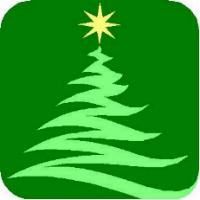Christmas Traditions in Ukraine.
Narrated by Oleg Baranovsky.

Christmas in Ukraine is celebrated January 7 according to the Gregorian calendar as in most of other Orthodox Christian countries.
During the Soviet time, it was not officially celebrated in Ukraine. Instead the communist government tried to substitute Christmas with the holiday of New Year. But the people did not forget their traditions. After gaining it’s independence in 1991, Ukraine started to officially celebrate Christmas.
There are numerous Christmas traditions here. They vary significantly in the different parts of the Ukraine.
In most parts of the Ukraine, Christmas Eve people create so-called ‘Vertep’ (means cave in ancient Greek). These are scenes from Bible of the birth of Jesus. They show little Jesus in manger, Mary, strangers offering their gifts and Bethlehem star in the sky. Those verteps are exhibited at public places, usually near or inside churches. At night candles are installed inside verteps for people who come to church for the night service can observe them.

The Christmas Eve is called in Ukraine ‘Sviaty Vechir’ (Holy Evening) sometimes also called ‘Sviata Vecheria’ (Holy Supper). People usually cook some tasty foods for this evening. There should be at least 12 different foods on the table. Those should mandatory include ‘Kutia’ -- the ritual food which is prepared from cooked wheat and special syrup containing diluted honey, grated poppy seeds, raisins and sometimes walnuts.
For this evening people install and decorate Christmas trees in their houses. (Sometimes they are called also ‘Novorichna Jalynka’ -- New-Year’s firtree here). Another tradition exists in some regions of Western Ukraine to decorate the table with ‘Didukh’ -- a sheaf of oats or wheat of special shape: with four legs and numerous little bundles. It symbolizes prosperity for the next year.
St. Nicolas (Santa Claus) also called here ‘Did Moroz’ is an ubiquitous Christmas character and is supposed to bring some gifts under the Christmas tree this night.
Also in some regions people make decorated Christmas eggs very similar to Easter eggs -- ‘Pysanky’.
Some wonderful
Next day in some villages in Western Ukraine people organize some folk performances which obviously were inspired by ancient pagan habits. They dress up themselves as monsters with pelts and horns and run through the village trying to scare people. After that they run to the special place on the outskirts of the village and there happens the main act: they fight with all people of the village and finally are defeated. The scarecrows are burned in the big fire. And all people are dancing around this fire. This symbolizes the fight of Good and Evil and that Good defeated Evil for the whole next year.
We celebrate this Christmas as well by leaving up the tree, and serving the obligatory (can you spell Borscht?) dishes. Mostly the food is a welcome feast, however Borscht isn't everyone's favorite. Although if you don't at least feign an interest in it, no perogies for you! I make both the Borscht and the Perogies from my paternal grandmother's recipes.







I love hearing about your family's traditions. We always kept our tree and nativity up until this day for the Epiphany, or Little Christmas as we called it. I have never tasted borscht but I love beets. xo
ReplyDeleteI am so enjoying this series you are writing. It is informative, entertaining and uplifting.
ReplyDeleteI like borscht and perogies both!
ETS
My husband is of Ukrainian heritage. He makes the best Babka and pierrogi, and his rugelach is delicious!
ReplyDeleteFun to read this post!